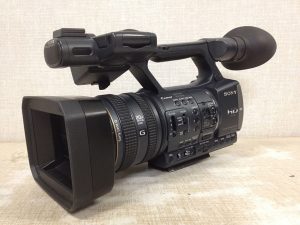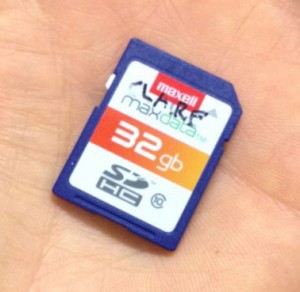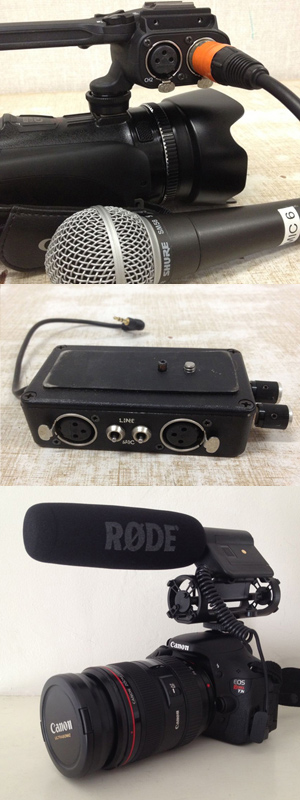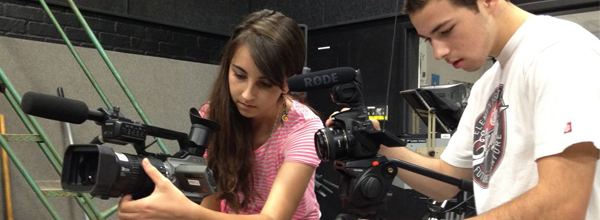How To Choose a Video Camera for Broadcast Journalism
Choosing the right video camera for your broadcast, video or multimedia program can be tricky. The market is filled with a wide range of products, and it seems like you never get that perfect combination of features and cost.
Here are some tips for making the right decision, no matter what your budget or need.

Determine your educational and journalistic goals. Do you need to teach all aspects of videography (like manual focus, exposure, white balance, etc.) or do you just need record something–anything–for your publication’s website? Is the footage just for the internet (not high quality) or for High Definition broadcast television (high quality)? Your answers will help you determine what features you need and how much it will cost. Cameras with manual controls tend to be more expensive.
How many cameras do you need to get the job done? Is every reporter shooting footage every class period, or can students schedule their shoots so that they don’t overlap? A little advanced planning can save you money because you won’t need as many cameras.
Quality vs. Quantity. Consumer cameras have very nice image quality these days, but aren’t built for the rigors of continual use by students. You can buy more consumer cameras than pro cameras, but they’re also more likely to break, causing interruption in your workflow, and possibly to miss that important interview or event when you least expect it. If you can’t afford a fleet of pro cameras (who can?) consider buying one nice, pro-sumer camera for important events, and the rest can be less expensive consumer models.
Record Format. Most modern video cameras record onto an internal hard drive, or removable media like SD cards, and it’s probably best to avoid tape cameras since they’re on the way out. Removable media is better than internal hard drives because you can start editing the footage while the camera goes back into rotation to shoot the next project. If you use SD cards, use “Class 10” cards that read and write footage fast enough for HD media.

Cameras record in different formats like AVCHD, mp4, AVI and h.264. Yes, it’s all Greek to us, but it matters when you start editing. Make sure your editing software is compatible with your camera’s recording format, or those great interviews will remain stuck in your camera. Check your software specifications for details.
DSLRs for video. Many students and staff already own a Digital Single Lens Reflex camera, and all of the current models shoot video. For this reason, it’s a great option if you want to start cranking out newspackages right away. The image looks great with these cameras and you can teach full manual controls, too.

But DSLRs have some downsides. Fast moving images tend to wobble due to a phenomenon known as “shutter roll,” which is caused by the way the image sensor captures light. The other major problem is sound: the built-in microphones are terrible and adjusting audio levels has to be done through submenus–something that isn’t easy to do in the middle of recording.
Don’t Forget Sound. Probably the most important element for broadcast journalism is sound. Without it, we can’t understand what your sources say in their sound bites (audio quotes) or hear the NATS (natural sounds) of an event or location. Built-in microphones are poor quality and can’t pick up sound from very far away. Look for cameras that have a microphone input, and plug in an external mic.
Most consumer cameras that have mic inputs use a “mini jack” (or ⅛”) port. If your budget allows for it, choose cameras with built-in XLR inputs, which is the professional standard for microphones. If your camera only has the mini jack, you can buy XLR adapters so you can use professional audio equipment. For more info on sound and microphones for video, read this article.
Accessories. When you make your budget, remember to include some very important accessories:
- Tripod ($100-$300): eliminate shake and record a stable, professional-looking image. Mandatory.
- Batteries ($50-$100): cameras come with one, but they’re usually only good for a couple of hours. Consider buying larger capacity batteries so you can record more footage or longer events.
- Camera case ($50-$300): protect your investment and keep everything clean
- UV filter ($25-$50): this screws onto the front of the lens to protect it from scratches and chips that could ruin the image. An investment of $30 is a lot less than the $1000 repair bill if a student makes a mistake. Buy one that’s the right diameter for your camera lens.
- SD card reader ($20-$40): if your computer doesn’t have a built-in reader (all new macs do), you might want to purchase this to get the footage into your computer. (The USB cable that comes with your camera will get the job done, but is noticeably slower than using a card reader).
- Headphones ($30-$75): buy over-the-ear headphones (not ear buds) to monitor the quality of sound from the mic you’ve got plugged in
Video on the Cheap. If your budget is limited, try these tactics:
- Start small. Buy just one or two cameras and learn to share. Develop a long term purchasing plan to get more cameras over several years.
- Use student cameras. While risky in terms of quality or availability, many students already have their own cameras. Be sure to test them before a real assignment.
- Use your smartphone’s video camera. Many smartphones record high definition video and even edit in the same device.
Ultimately, you’ll need to base your decision on your specific needs, learning goals, class size, and the culture of your particular journalism program. What’s your approach to buying video cameras? Share your experiences by commenting below.






Thanks, Michael. Perfect Timing!
Excellent resources, ideas and pin point advice Michael. This question has been coming up so much recently, and your guidance is truly on target.
Pingback:How To Choose a Video Camera for Broadcast Journalism | Johnarudkin's Blog
You have awesome knowledge about broadcast journalism. I extremely like your post about using video camera in broadcast journalism.
This is the surprising once-over of the cameras for any person who needs to get it and it is to an awesome degree difficult to get the colossal camera and now a days development is progressing and improving well ordered so it is to an extraordinary degree dull to get the right one.
This article is too good.
It’s really interesting to read and I just find out this type of article.
I just love it. Thank you!!!!
I S TECHNICAL WRITING INVOLVED IN BROAD CAST WRITING?
First time here on your blog and it’s amazing